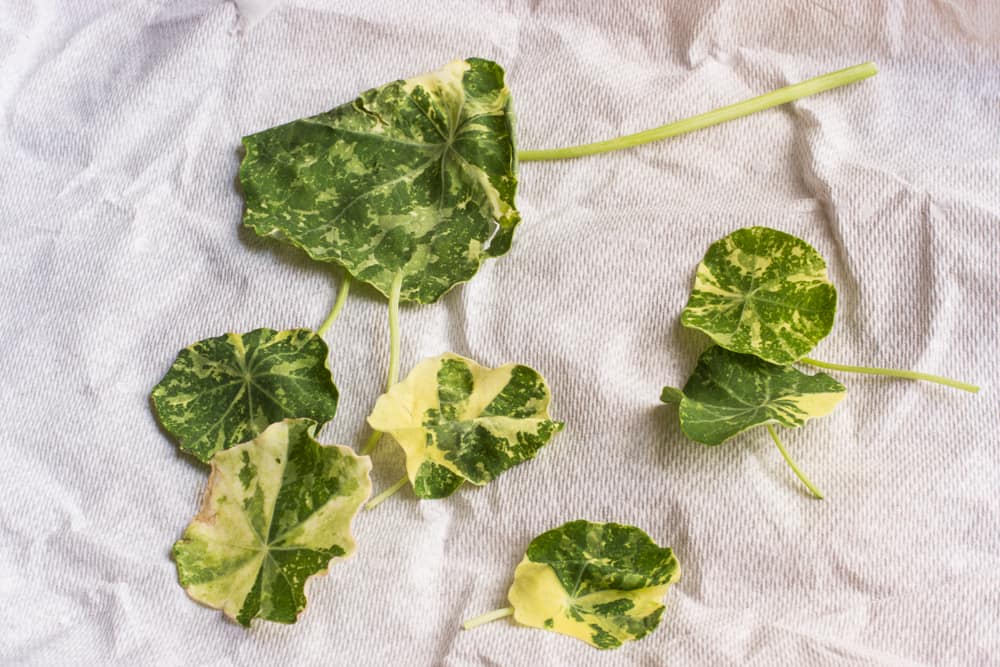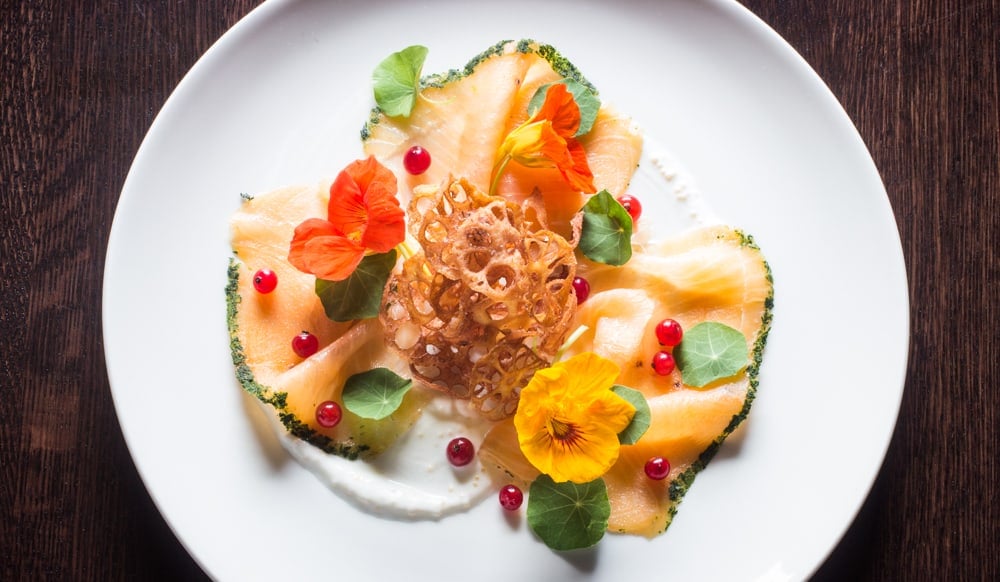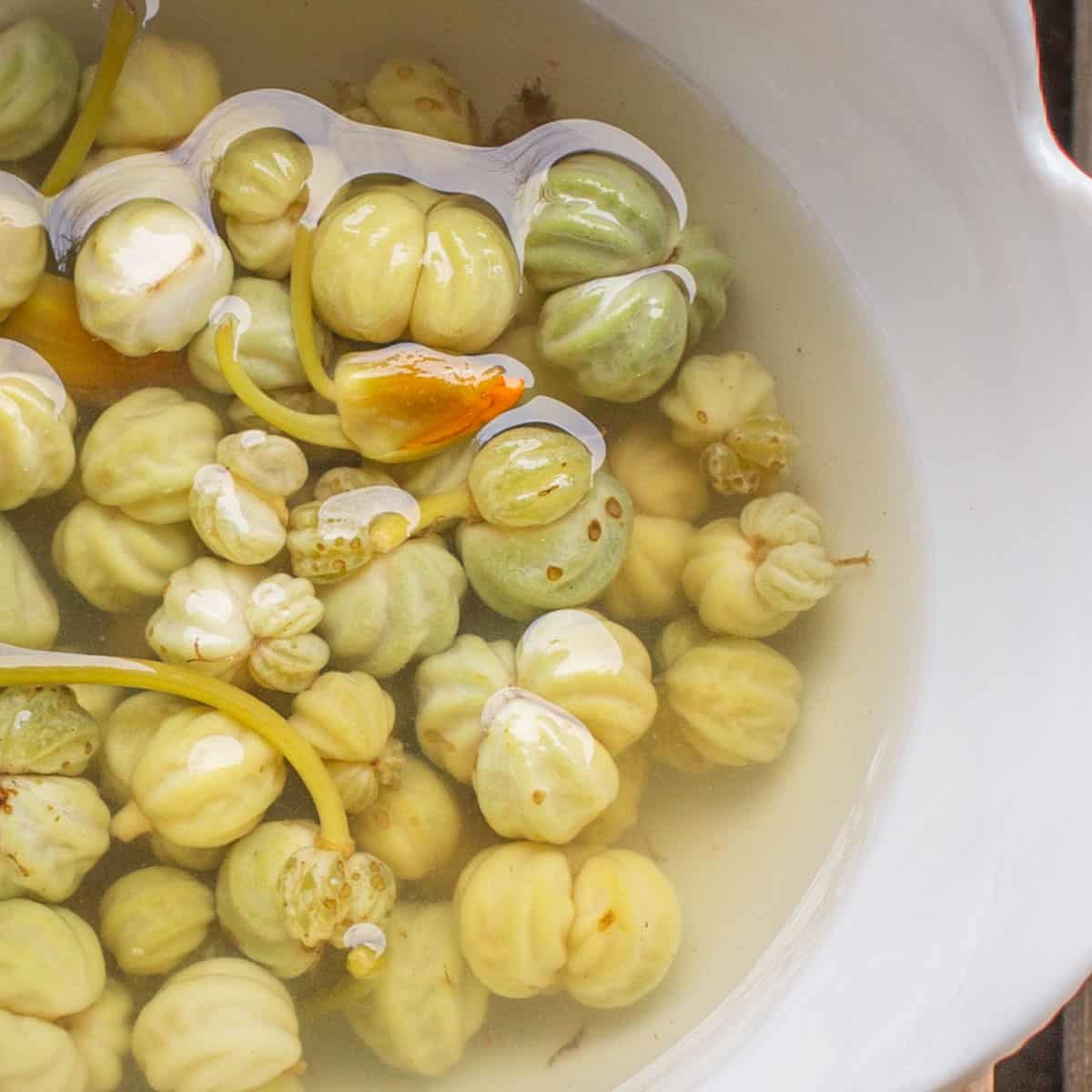Most people know them from gardens, but nasturtium leaves and flowers are both edible and delicious. They're one of the best edible flowers I know, and I grow nasturtiums just to eat them.

Lots of chefs like to garnish things with flowers, they're pretty, but often that's about it. We eat with our eyes though, and I if there's an edible flower I can eat, or serve, it's going on the menu.
Nasturtiums though? They're a completely different story. Nasturtiums are not only beautiful, but are edible, and incredible. With how good they taste, It's surprising to me that more people don't know about them.
Most of my friends in the industry are aware, but the general public doesn't seem to know yet. I even know one chef who makes the flowers into ice cream, and it's delicious, and you don't need an ice cream blender! (See that recipe in Chef Jeremy Fox: On Vegetables)
My mom used to work part time at a flower shop. After I told her how much I love these, she started pitching them to customers on the basis of being edible, not surprisingly, she sold much more of them when people know they serve a dual purpose.
Eating
From a kitchen stand point, all you want to do with these is throw them raw on plates and salads, it's ok to dress the leaves lightly, but the flowers will wilt quickly tossed in a dressing.

Flavor
Nasturtiums are just plain delicious. The leaves start out sweet, and end spicy and hot, a bit like mustard greens or cress picked in the summer. The flowers have a pleasant flavor, and taste just like you'd imagine a flower would taste-aromatic and floral.
Nasturtium flowers have a bit of the spicy-ness of the leaves too, but they're no where near as potent. Either way, they go great together on a dish. If I'm pinching pennies, I'll order only the leaves, since they're much cheaper, and have a longer shelf life than the flowers.

Chef Tips
- If you're growing the nasturtiums yourself, remember that a little pruning here and there is good for growth, don't be afraid to clip leaves and flowers here and there to eat, it spurs the plant to create more.
- Make sure if you're picking flowers to eat, or sell, that you pick them at the best time: after the dew is gone, but before the sun makes everything wilt.
- There are a number of different species, but the pretties in my opinion are the variegated nasturtiums-they have a bi-color, mottled looking leaf.
- When you pick nasturtiums to sell or refrigerate for eating (i.e. put in a plastic container) put a large leaf on top of the small leaves to keep them sheltered from light and the elements.
If you have a garden with some free space, add them to your repertoire, you won't regret it!
Nasturtium Capers
If you have nasturtiums, you have to try making homemade nasturtium capers. Out of all the DIY capers out there (and there are many) nasturtium capers are arguably the best, and the have a taste that's so similar to regular store bought capers that it will blow your mind.

I've made homemade pickled capers and fermented capers out of plenty of things, but the capers made from nasturtium seed pods are my favorite.
Depending on the size of your nasturtium patch, you may have to put them in a jar and leave them in the fridge for a while to gather enough, but it's worth it, and it's also a good way to justify having that giant, beautiful nasturtium patch! See my fermented nasturtium capers here.

Saramae
Going to for the first time
Sam Schaperow
Interestingly, watercress is a species of Nasturtium.
Doug001
That's how the nastertium got it's name, but watercress got it's name from the Latin "nase turum" (I may have that spelled completely wrong) meaning "nose turning".
On another note, it's the seeds that you pickle for a caper substitute not the flower bud, and it should be used when still fairly young as they become fibrous with maturity.